If you’ve been looking into healthier foods, and in particular, local foods, you’ve probably seen some terms thrown around that might be a little confusing, like “grass-fed,” “pastured,” or “free-ranged.” Perhaps you are wondering what these terms all really mean, and why it matters.
When we talk about an animal being “grass-fed” “on pasture” or “pastured,” we mean that they have free access to perennial grasses and plants from which they browse and forage. In order to best understand this and why it’s important, we need to talk about the natural diet of different animals. For instance, cows, goats, sheep, and buffalo are all ruminant animals. This means they have a four compartments in their stomachs, and they by nature eat plant-based, which gets softened in the first two compartments of their stomach (the rumen and reticulum), is regurgitated, chewed again, and then makes its way through the rest of the digestive system. There is a careful balance of enzymes throughout the stomach compartment that must be maintained, and eating grass helps to keep things copacetic in that regard.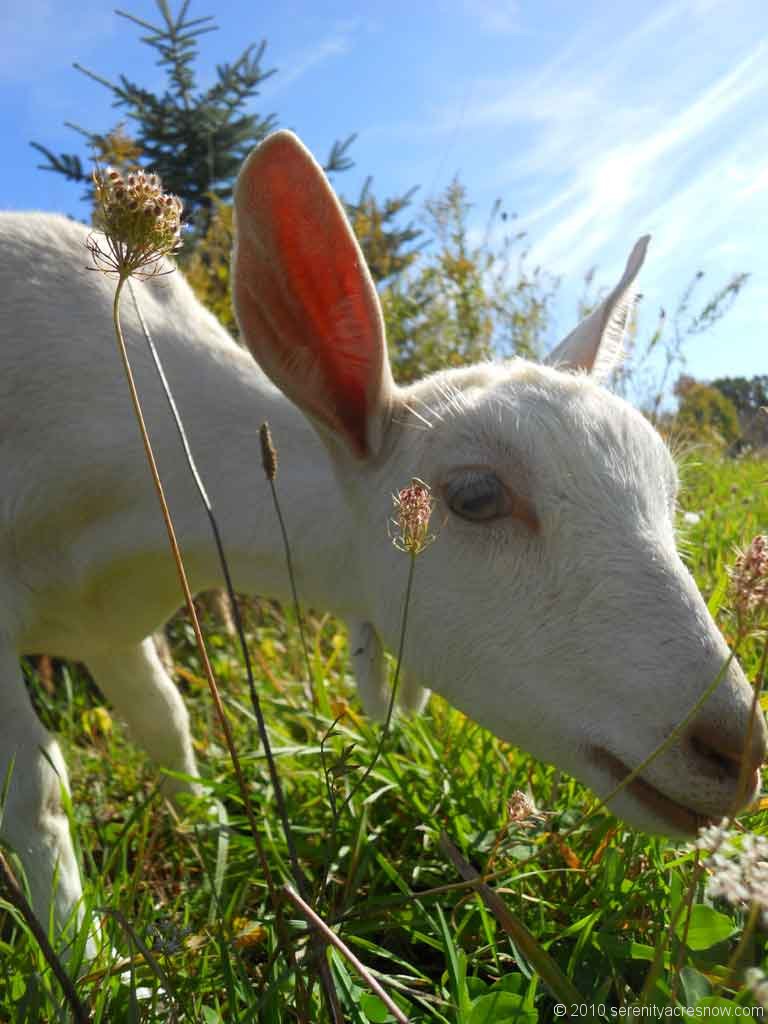
Our goats do get some occasional grain, but as our Awesome Vet has explained, it’s a little like “Cold Stone Creamery” is for humans – a treat, but not one you indulge in every day. This time of year, of course, there is no fresh grass to put them on, so they are eating hay. But we buy high-quality hay that gives them the best nutrition possible. This is especially important for them right now, with our girls being pregnant!
When grain is introduced into a ruminant’s diet, it creates acid, which upsets the balance of enzymes, and introduces ailments and disease, especially if that is the only source of food for the animal. 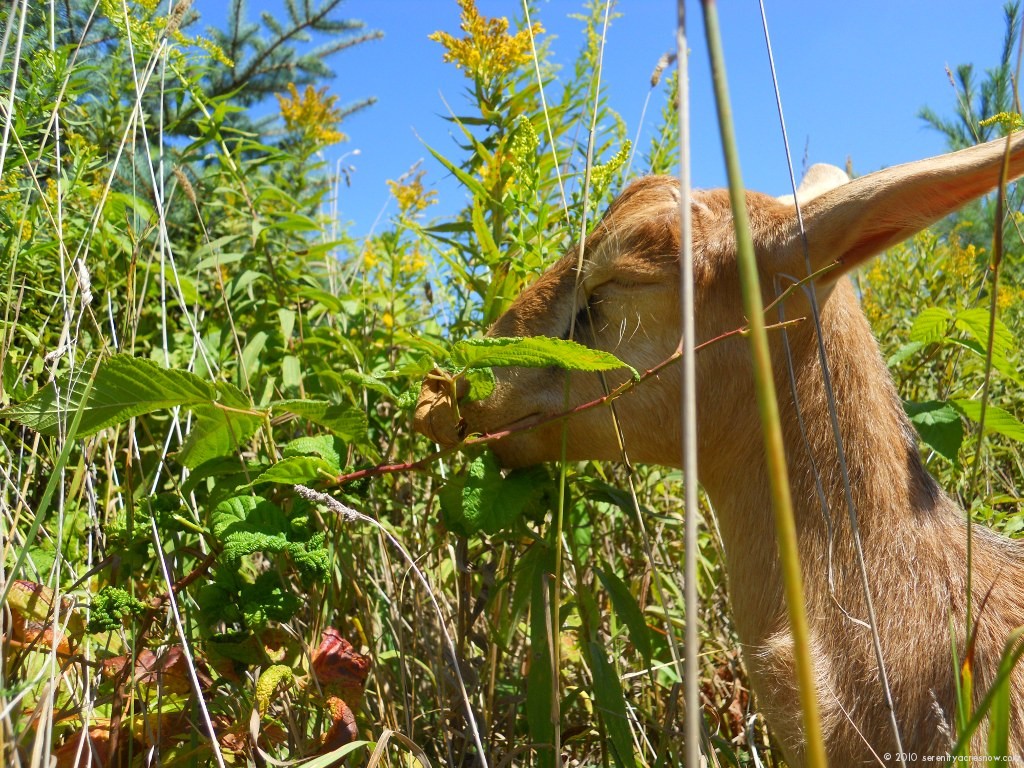 In fact, e.coli 157H7 and other bacteria flourish in that changed environment, which is in part why there have been increased instances of bacterial outbreaks in the beef supply – most of the beef in this country is produced in CAFO (Concentrated Animal Feeding Operation) settings, where the animals are not raised eating grass, spend most of their time on dirt or mud, and are instead consuming grain and oftentimes, chicken litter. Yes, you read that right. Chicken poop. All encouraged by our federal government. Joel Salatin, of Polyface Farms in Virginia, points out in several of his books that there is a federally inspected slaughterhouse in his county that stopped accepting non-grass-fed cattle to place for sale in their retail market because the owner got tired of smelling chicken poop when he walked into his freezer. Yuck.
In fact, e.coli 157H7 and other bacteria flourish in that changed environment, which is in part why there have been increased instances of bacterial outbreaks in the beef supply – most of the beef in this country is produced in CAFO (Concentrated Animal Feeding Operation) settings, where the animals are not raised eating grass, spend most of their time on dirt or mud, and are instead consuming grain and oftentimes, chicken litter. Yes, you read that right. Chicken poop. All encouraged by our federal government. Joel Salatin, of Polyface Farms in Virginia, points out in several of his books that there is a federally inspected slaughterhouse in his county that stopped accepting non-grass-fed cattle to place for sale in their retail market because the owner got tired of smelling chicken poop when he walked into his freezer. Yuck.
Studies have found that when cattle that are taken out of a CAFO and put onto a grass diet, 80% of e.coli 157H7 is eliminated from their systems within five days. If that doesn’t speak to us about what these animals should be eating, I’m not sure what does. Ultimately, health issues with animals end up in our food supply, so it should be important to all of us that animals are raised in optimal conditions, and that simply isn’t going to happen on a feedlot where they have no access to grass, and are laying around in their own manure. They go into the slaughterhouse with that manure caked on their bodies. Gross.
Chickens may be a more familiar subject in this discussion about terminology, because so many of our country’s major egg producers have adopted marketing language on their cartons to promote feel-good ideas about how the chickens laying those eggs live. Bear in mind, however, that “free-ranged” can simply mean that the chickens are not in cages, but still in the huge warehouse sized buildings. There is no legal standard of quality or quantity of outdoor space they must have access to – they just need some kind of access to the outdoors – even if that is a six square foot patch of dirt right outside of the warehouse. Most wouldn’t even go there, because chickens, like most birds, are wary of change. They like routine, and if they’ve spent most of their life indoors, they will find the prospect of going outside kind of frightening.
Additionally, the USDA standards for “organic” chickens still allow producers to trim beaks and force molt the birds. If you have to trim your birds beaks, that means they are attacking one another, even perhaps cannibalizing each other. This is typically a sign of stress due to overcrowding. Forced molting is leaving the lights on for two weeks to keep the birds awake and force their bodies to go through a molting, during which they will not lay eggs, but will resume after the molt is completed. Does this jibe with the concept you have about organics? If your vision includes humane treatment of the animals, probably not.
Chickens are omnivores. They can eat grain, grass, bugs, worms, vegetables, fruits, heck, they’ll even go after frogs and mice if they can catch them. So we do provide our chickens with a high-quality locally produced grain mash, and during the winter, their diet is largely comprised of that because of a lack of forage. But we do bring them any leftover veggies, fruit, bread and grains from our own pantry, which they just happily devour. As spring comes around, they will spend more time outdoors, and will once again be foraging on pasture.  As the seasons change, so do the characteristics of the eggs. For instance, the yolks of our chicken’s eggs are more deeply hued in the warmer weather, and this is because they have more fresh sources of beta carotene available to them while on pasture. It’s interesting to note, professional chefs, particularly those trained in Europe, often have different recipes for eggs that are dependent upon the season. It’s seasonally adaptive cooking, because when naturally produced in the local environment, even the foods that are available year-round change through the seasons. Interesting, huh?
As the seasons change, so do the characteristics of the eggs. For instance, the yolks of our chicken’s eggs are more deeply hued in the warmer weather, and this is because they have more fresh sources of beta carotene available to them while on pasture. It’s interesting to note, professional chefs, particularly those trained in Europe, often have different recipes for eggs that are dependent upon the season. It’s seasonally adaptive cooking, because when naturally produced in the local environment, even the foods that are available year-round change through the seasons. Interesting, huh?
Food that has been produced in a clean environment where the animals are fed a diet that agrees with their systems instead of a feed which creates issues that require massive amounts of pharmaceuticals to correct is better for us. Not only from a nutritional standpoint, but also from an environmental one. (Want to learn more about why? Check out Food Inc., Everything I Want To Do Is Illegal: War Stories From the Local Food Front, and The Future of Food, for starters.) So why is so much of our food produced using methods that makes animals unhealthy, results in food that is lower in nutrients, and creates environmental havoc? Because it’s cheaper, and the government will subsidize it.
When local producers explain to you that the animals they are raising are grass-fed or pastured, know that we are trying to provide the best possible diet for the critters, to create the best possible resulting food product, and insure that the environment is improved, not decimated, by the process. Of course, these methods cost more, and there are no government subsidies affecting the end cost to the consumer. But the food is more nutrient-dense, the animals are treated with compassion and care, and the production methods aren’t responsible for creating an unhealthy stinkhole on the land where those animals are raised. Whether you buy certain products or not, your tax dollars go to subsidize industrially-produced foods. So even though the price tag for the item might be lower when you make the actual purchase, you’ve still already paid for part of it with your taxes – not only in terms of industrial farmer subsidies, but environmental cleanups, recalls, etc. Yes. We as taxpayers often pay for the food recalls you hear about. Oh, and that tainted, recalled food? It often makes it right back into the food supply chain. For instance, many of those recalled eggs from Iowa last year? They were sold to a company that pasteurized them and processed them into powder. They’re probably in many of the processed mixes on grocery store shelves or already in your pantry. Sure, Pasteurized. But I still don’t want to eat them.
We’ve been working not only on producing more of our own food, but also, trying to change our diets to eliminate more processed food. The more we learn about the food production system in our country, the more motivated we are to opt out of the industrial-governmental supply chain and find sources of foods that are produced in an ethical, ecologically sound manner that strives to bring excellent nutrition to the table. It’s not easy, and we aren’t perfect. We’ve still got a long way to go, and keep learning more all the time. But as we learn, we feel it’s important to share the knowledge we’ve acquired. What have you learned about locally produced foods that you’d like everyone to know? Feel free to share in the comments. 🙂
We hope you enjoy this blog and the antics of our farm. Please check out our fan page on Facebook and “like” it for special updates there, and if you use Twitter, by all means, please add us so we can tweet with you!

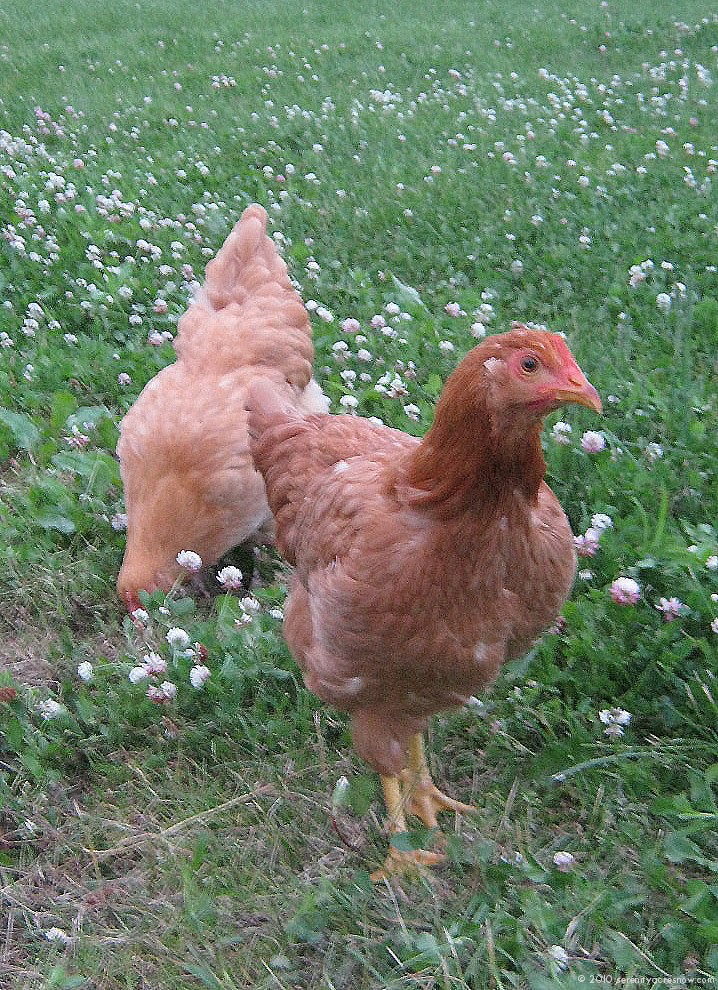

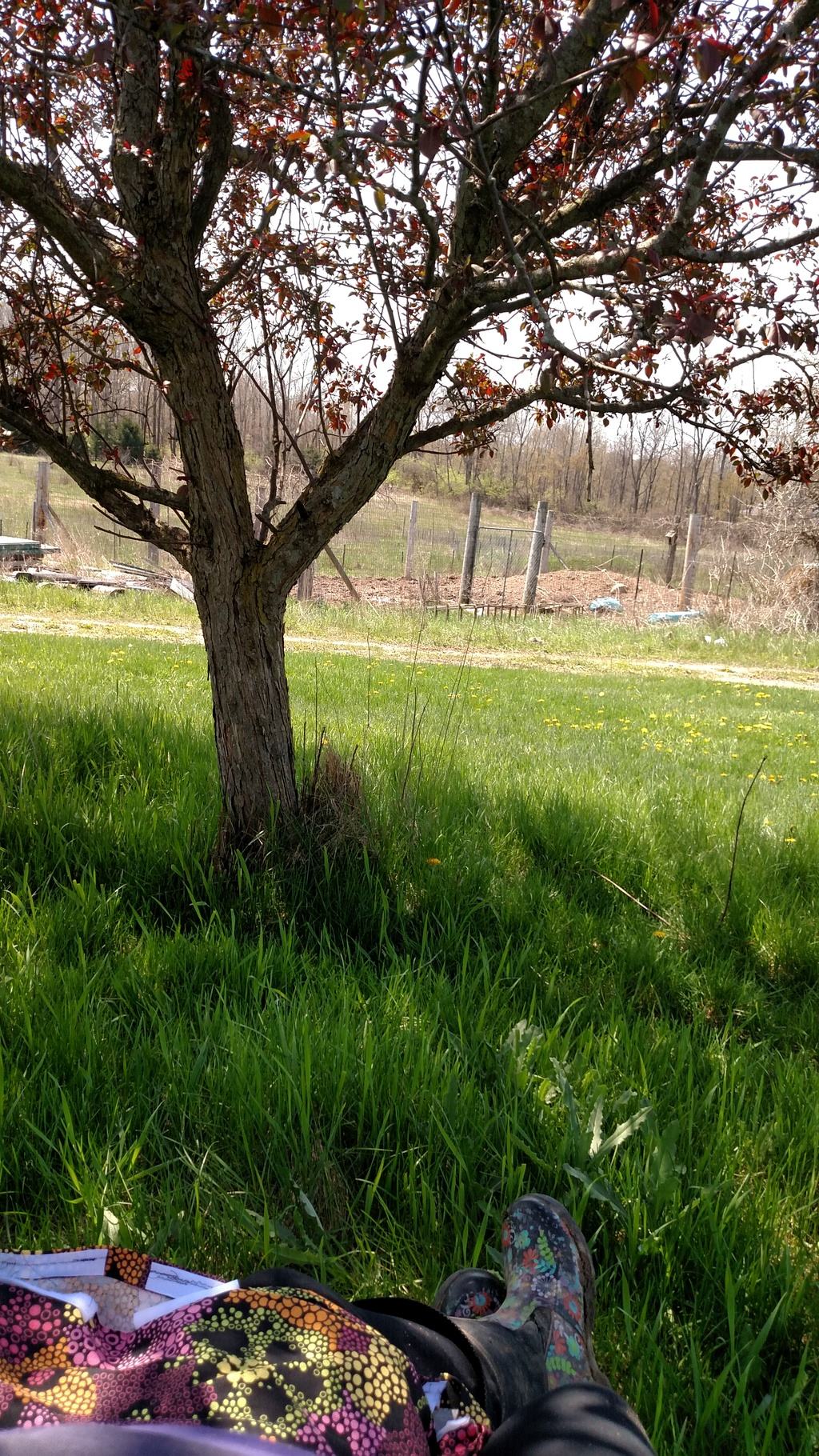
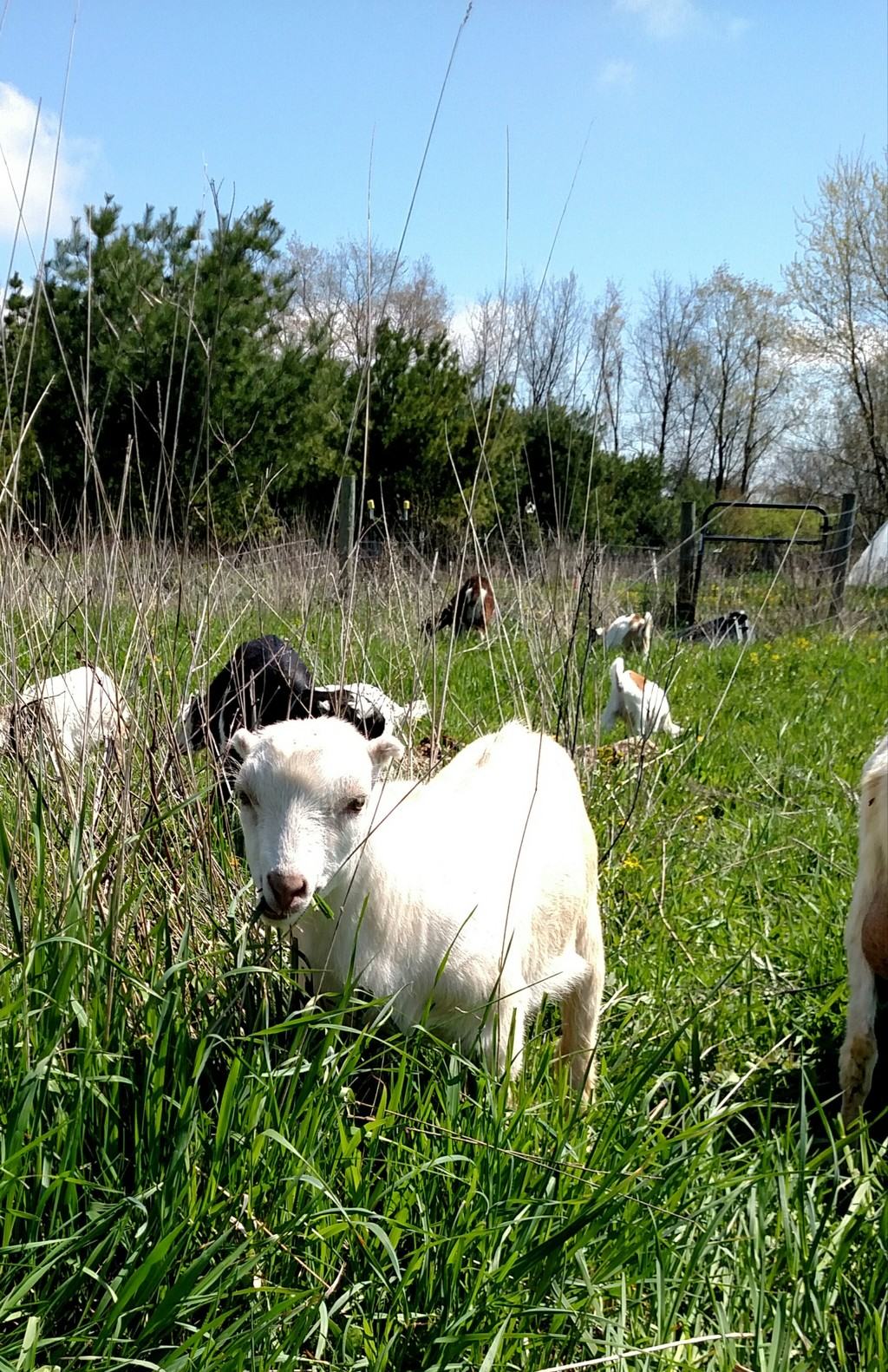
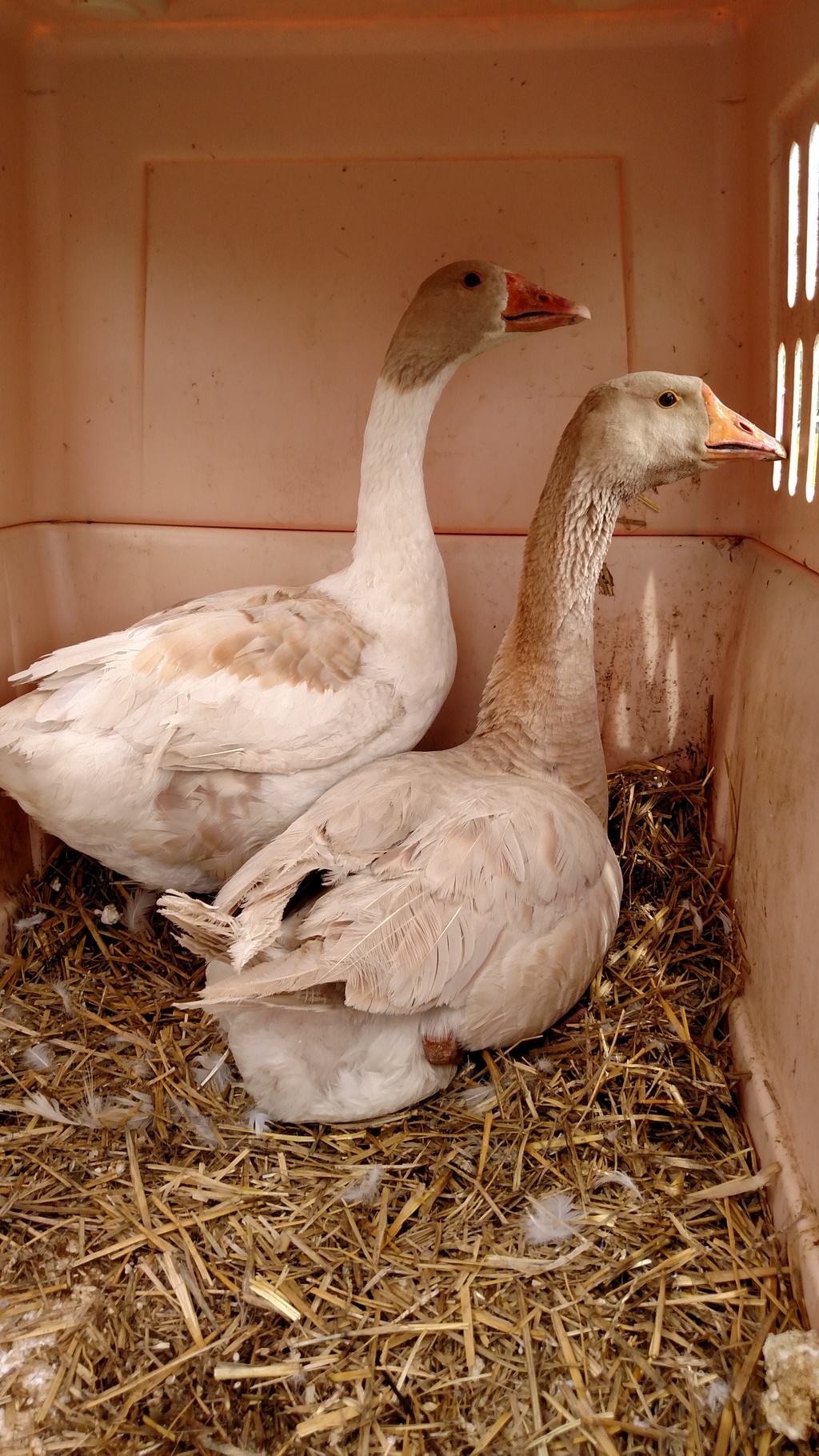
Leave a Reply